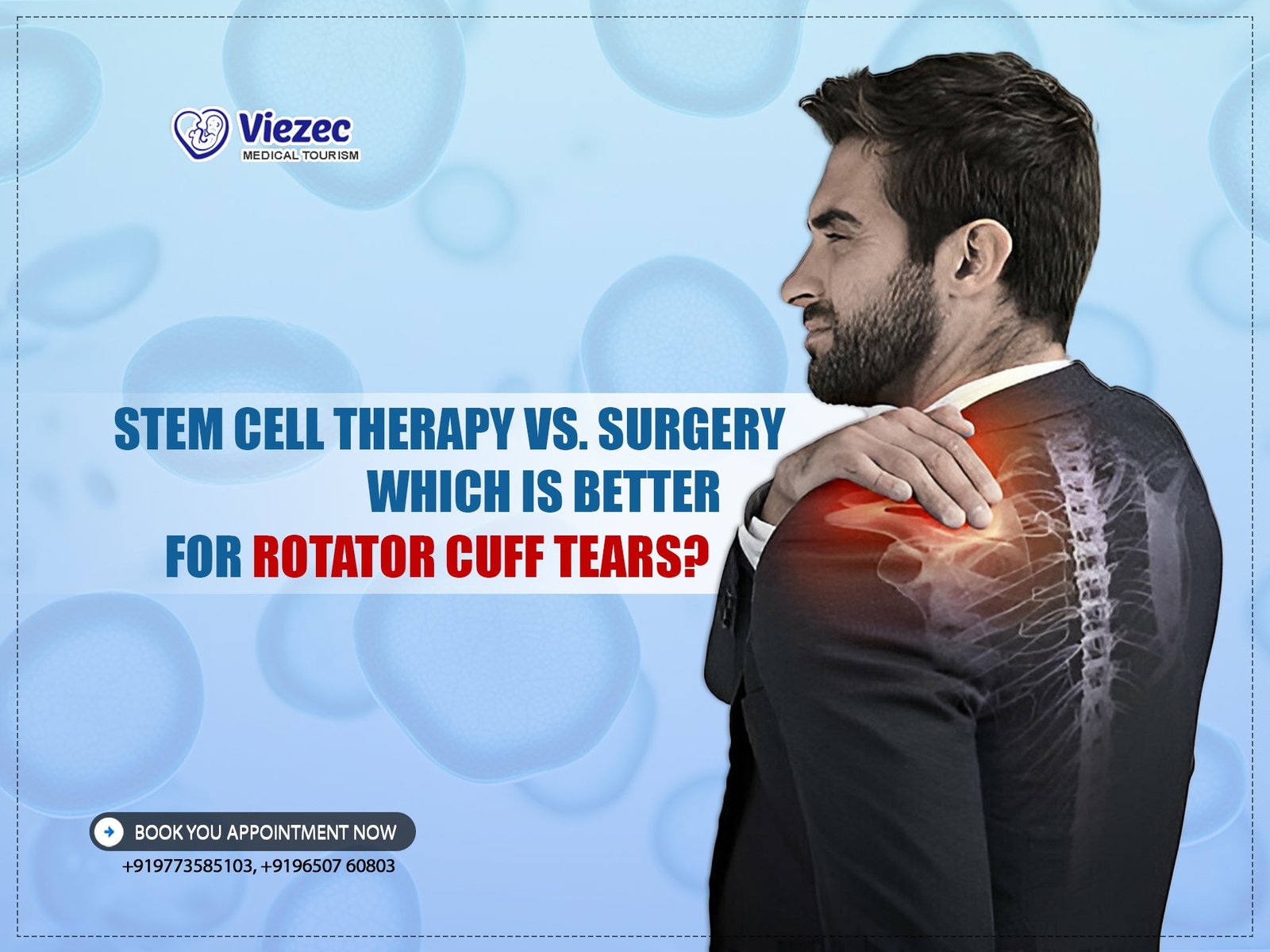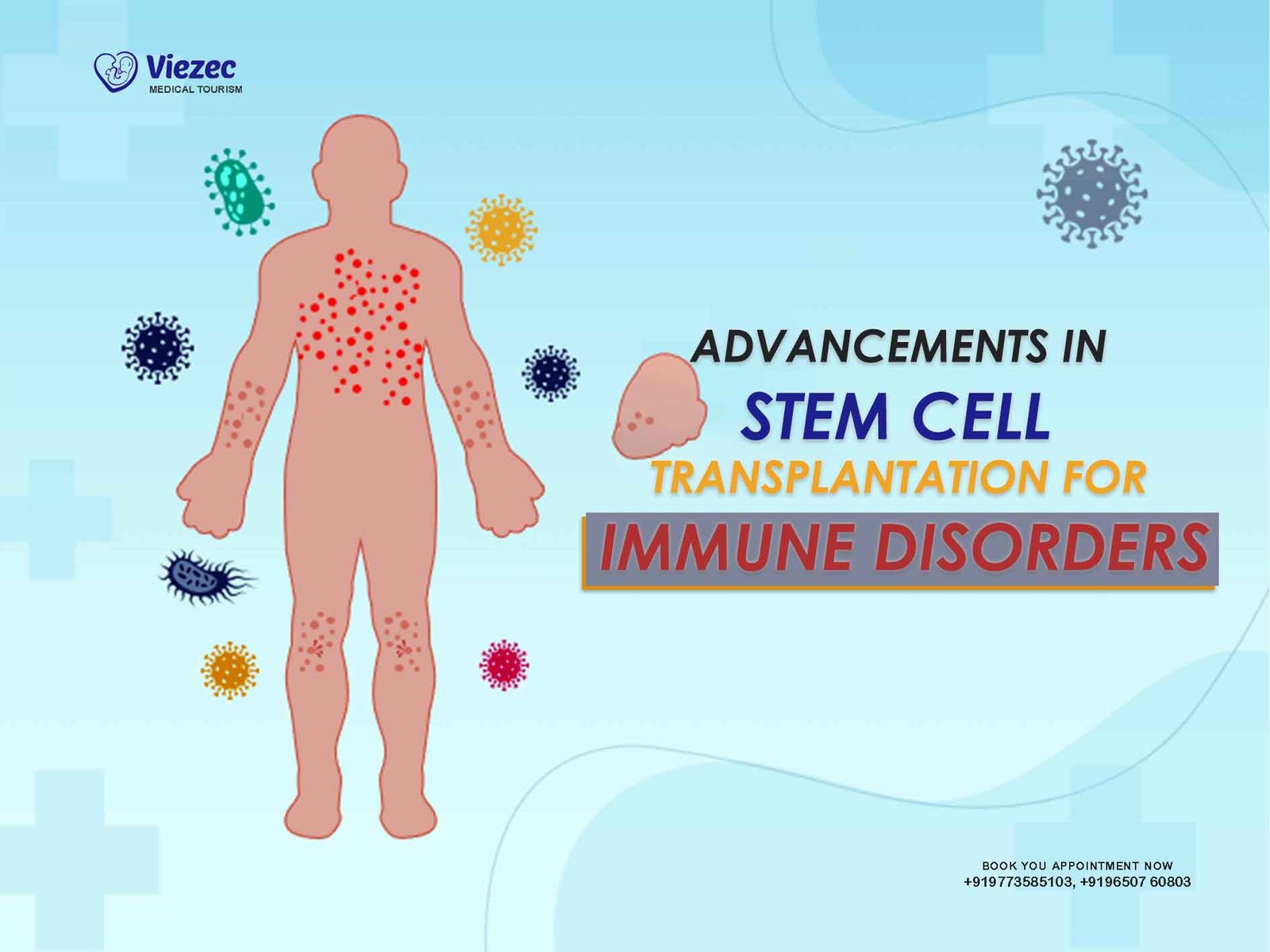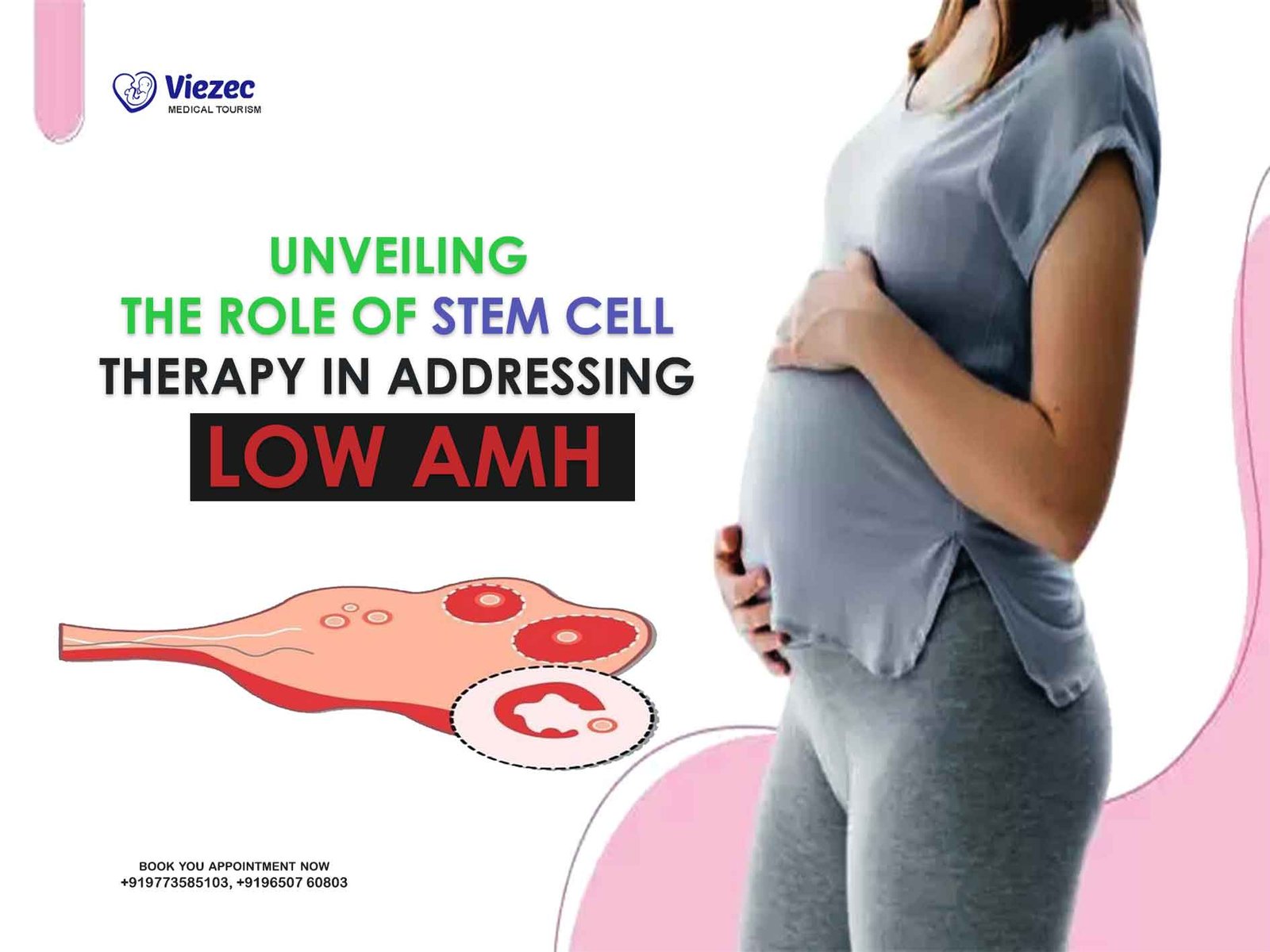Rotator cuff tears are a common musculoskeletal injury, particularly among individuals engaged in repetitive overhead activities or those with degenerative changes due to aging. The rotator cuff comprises four muscles and tendons that stabilize the shoulder joint, facilitating its movement. Tears in this group of tendons can lead to pain, weakness, and limited range of motion, significantly impacting daily activities and quality of life.
Overview of Stem Cell Therapy and Surgery
In recent years, advancements in regenerative medicine have led to the emergence of stem cell therapy as a promising alternative to traditional surgical interventions for rotator cuff tears. Stem cell therapy harnesses the body’s natural healing abilities by introducing stem cells, which have the potential to differentiate into various cell types, promoting tissue repair and regeneration. Conversely, surgical procedures aim to repair the torn tendon through either arthroscopic or open techniques, often requiring extensive rehabilitation post-operation.
Understanding Rotator Cuff Tears
Anatomy of the Rotator Cuff
The rotator cuff consists of four muscles: the supraspinatus, infraspinatus, teres minor, and subscapularis. These muscles work together to stabilize the shoulder joint and facilitate movement, particularly overhead activities like lifting and reaching. The tendons of these muscles attach to the humerus, forming a cuff-like structure that helps keep the shoulder joint in place.
Causes and Symptoms of Rotator Cuff Tears
Rotator cuff tears can occur suddenly due to trauma or gradually over time due to repetitive stress or degenerative changes in the tendon. Common causes include sports injuries, falls, and age-related degeneration. Symptoms often include pain, weakness, and limited range of motion in the shoulder, which can significantly impact daily activities and quality of life.
Diagnosis Methods
Diagnosing a rotator cuff tear typically involves a combination of physical examination, imaging tests such as MRI or ultrasound, and sometimes diagnostic injections to confirm the source of pain. A thorough assessment by a qualified healthcare provider is crucial for accurate diagnosis and treatment planning.
Exploring Stem Cell Therapy
Mechanism of Stem Cell Therapy
Stem cell therapy works by harnessing the regenerative potential of stem cells to promote tissue repair and regeneration. Stem cells can differentiate into various cell types, including tendon cells, which can help repair the damaged rotator cuff tendon. Additionally, stem cells release growth factors and cytokines that stimulate the body’s natural healing processes.
Types of Stem Cells Used
There are various sources of stem cells used in therapy, including embryonic stem cells, adult stem cells (such as those derived from bone marrow or adipose tissue), and induced pluripotent stem cells. Each type has its advantages and limitations, and the choice of stem cell source may depend on factors such as availability, safety, and efficacy.
Efficacy and Safety
Clinical studies investigating the efficacy of stem cell therapy for rotator cuff tears have shown promising results, with many patients experiencing improvements in pain, function, and tissue healing. However, like any medical procedure, stem cell therapy carries potential risks and complications, including infection, tissue rejection, and unintended differentiation of stem cells.
Surgical Options for Rotator Cuff Tears
Types of Surgical Procedures
Surgical intervention for rotator cuff tears typically involves either arthroscopic repair or open repair techniques. Arthroscopic repair, performed through small incisions using a camera and specialized instruments, offers less tissue damage and faster recovery compared to open repair, which requires a larger incision to access the damaged tendon directly. Patch augmentation techniques may also be utilized to reinforce the repaired tendon and improve outcomes.
Success Rates and Long-Term Outcomes
Success rates of surgical repair for rotator cuff tears vary depending on factors such as tear size, patient age, and the quality of tendon tissue. Overall, many patients experience significant improvements in pain relief, function, and range of motion following surgery. However, rehabilitation post-surgery is crucial for achieving optimal outcomes and preventing re-injury.
Rehabilitation Process After Surgery
Rehabilitation following rotator cuff surgery typically involves a structured program of physical therapy aimed at restoring strength, flexibility, and function to the shoulder joint. This may include exercises to improve range of motion, strengthen surrounding muscles, and gradually increase the intensity of activities over time.
Comparative Analysis
Effectiveness in Rotator Cuff Healing
When comparing stem cell therapy to surgical intervention for rotator cuff tears, both approaches have shown effectiveness in promoting tissue healing and improving clinical outcomes. Stem cell therapy offers the potential for less invasive treatment with reduced risk of complications, while surgery may be necessary for larger or more complex tears that require direct repair.
Risks and Complications
While stem cell therapy is generally considered safe, there are potential risks such as infection, allergic reactions, and incomplete healing. Surgical interventions carry risks such as infection, bleeding, nerve damage, and stiffness. Patients should carefully weigh the potential benefits and risks of each treatment option in consultation with their healthcare provider.
Cost Comparison
The cost of stem cell therapy versus surgical intervention for rotator cuff tears can vary significantly depending on factors such as the extent of the tear, the type of procedure performed, and the healthcare provider’s fees. Stem cell therapy may involve higher upfront costs but could potentially save money in the long term by avoiding the need for surgery and associated rehabilitation.
Patient Selection Criteria
Ideal Candidates for Stem Cell Therapy
Ideal candidates for stem cell therapy for rotator cuff tears are typically those with smaller tears, early-stage degenerative changes, or who wish to avoid surgery due to medical reasons or personal preference. Candidates should have realistic expectations and be committed to following post-treatment rehabilitation protocols.
Ideal Candidates for Surgery
Surgical intervention may be recommended for patients with larger or more complex rotator cuff tears that are unlikely to heal with conservative measures alone. Ideal candidates for surgery should be in good overall health, have realistic expectations, and be willing to commit to the necessary post-operative rehabilitation program.
Factors Influencing Treatment Choice
Factors influencing the choice between stem cell therapy and surgery for rotator cuff tears include the size and severity of the tear, the patient’s overall health and lifestyle, preferences, and the availability of treatment options. A thorough discussion with a healthcare provider is essential for making an informed decision that aligns with the patient’s goals and values.
Future Directions and Research
Advancements in Stem Cell Technology
Ongoing research and advancements in stem cell technology hold promise for further improving the efficacy and safety of stem cell therapy for rotator cuff tears. This includes the development of novel delivery methods, optimization of cell sources, and better understanding of the mechanisms underlying tissue regeneration.
Innovative Surgical Techniques
Surgical techniques for rotator cuff repair continue to evolve, with ongoing efforts to refine existing procedures and develop innovative approaches to enhance outcomes and minimize complications. This includes the use of advanced imaging techniques, minimally invasive surgical instruments, and biocompatible materials for tendon augmentation.
Emerging Therapeutic Approaches
In addition to stem cell therapy and traditional surgical interventions, emerging therapeutic approaches such as platelet-rich plasma (PRP) therapy, growth factor injections, and tissue engineering hold promise for enhancing tissue healing and improving outcomes for patients with rotator cuff tears. Further research is needed to determine the optimal use of these therapies and their long-term efficacy.
Ethical Considerations
Ethical considerations permeate discussions surrounding both stem cell therapy and surgical interventions for rotator cuff tears. Stem cell therapy raises ethical concerns related to the sourcing and use of stem cells, particularly embryonic stem cells, which are derived from human embryos. Ethical debates also center on issues such as patient consent, regulatory oversight, and the commercialization of stem cell-based treatments.
Similarly, surgical interventions for rotator cuff tears raise ethical questions regarding patient autonomy, informed consent, and the equitable distribution of healthcare resources. Surgeons and healthcare providers must navigate these ethical complexities while ensuring that patients receive appropriate care and support throughout the treatment process.
Patient Perspectives and Experiences
Understanding the perspectives and experiences of patients who have undergone stem cell therapy or surgery for rotator cuff tears can provide valuable insights into the decision-making process. Patient testimonials highlight the diverse range of outcomes and experiences associated with each treatment modality, shedding light on factors such as pain relief, functional improvement, and overall satisfaction with treatment.
Some patients may report significant pain reduction and improved shoulder function following stem cell therapy, enabling them to resume activities and enjoy a better quality of life. Others may express frustration with the lack of immediate results or the need for additional treatments to achieve optimal outcomes.
Similarly, patients who have undergone surgical repair of rotator cuff tears may share stories of successful recovery and restored shoulder function, underscoring the benefits of timely intervention and diligent rehabilitation. However, others may recount challenges such as post-operative pain, stiffness, or prolonged recovery, highlighting the importance of realistic expectations and adherence to rehabilitation protocols.
Decision-Making Process
Navigating the decision-making process when choosing between stem cell therapy and surgery for rotator cuff tears requires careful consideration of various factors. Patients should consult with orthopedic specialists or sports medicine physicians to discuss their individual circumstances, including the size and severity of the tear, underlying medical conditions, and treatment goals.
Factors to consider before making a treatment decision may include the patient’s age, activity level, overall health status, and preferences regarding treatment invasiveness and recovery time. Shared decision-making with healthcare providers can empower patients to weigh the pros and cons of each treatment option and make informed choices aligned with their values and priorities.
FAQs
Can stem cell therapy completely heal a rotator cuff tear?
While stem cell therapy shows promise for promoting tissue repair and regeneration, its ability to completely heal a rotator cuff tear may vary depending on factors such as the size and severity of the tear, the patient’s overall health, and the quality of the stem cells used. Some patients may experience significant improvement in pain and function with stem cell therapy, while others may require additional treatments or surgical intervention for optimal outcomes.









